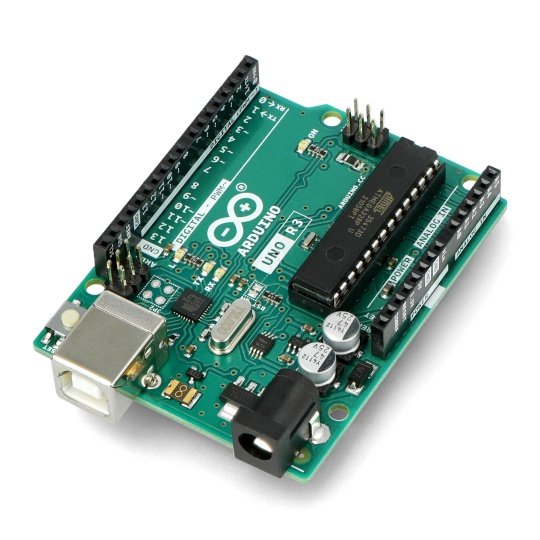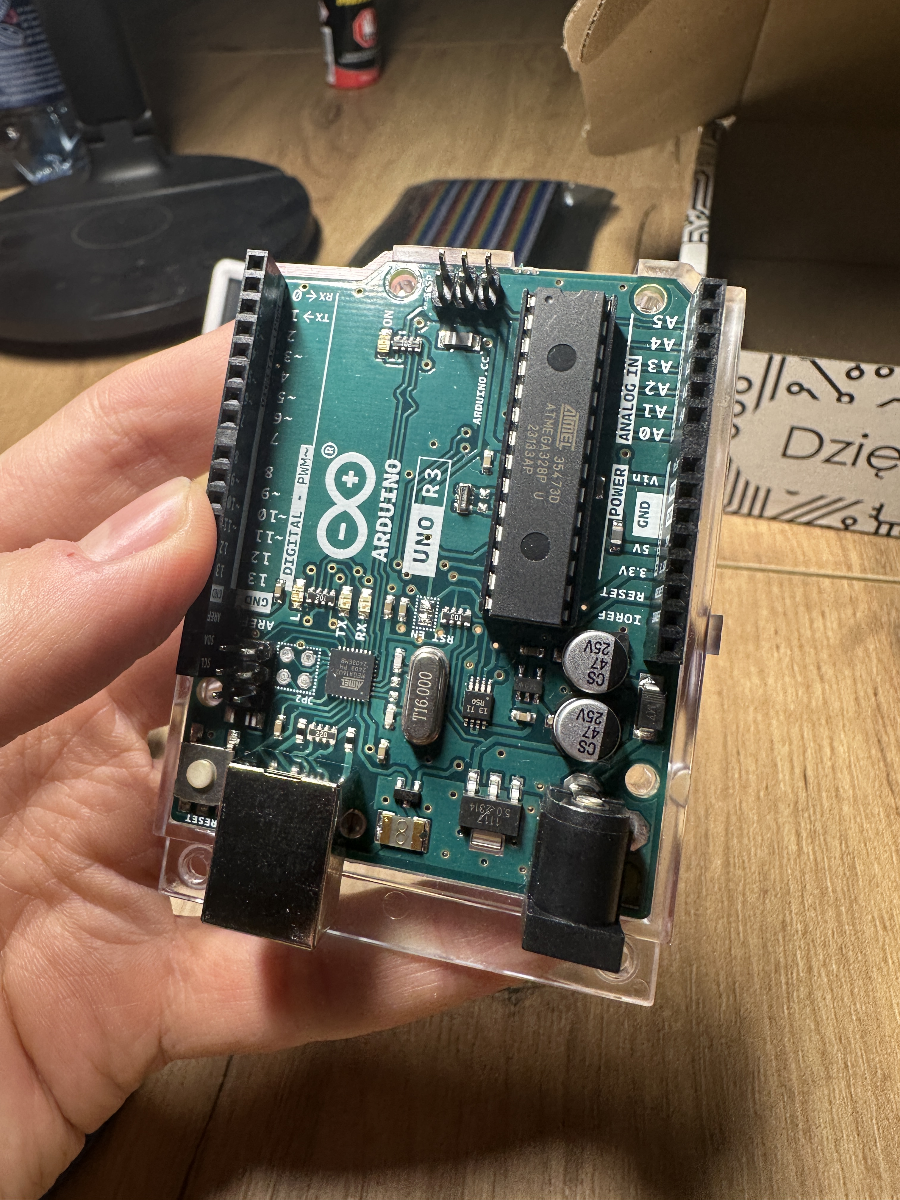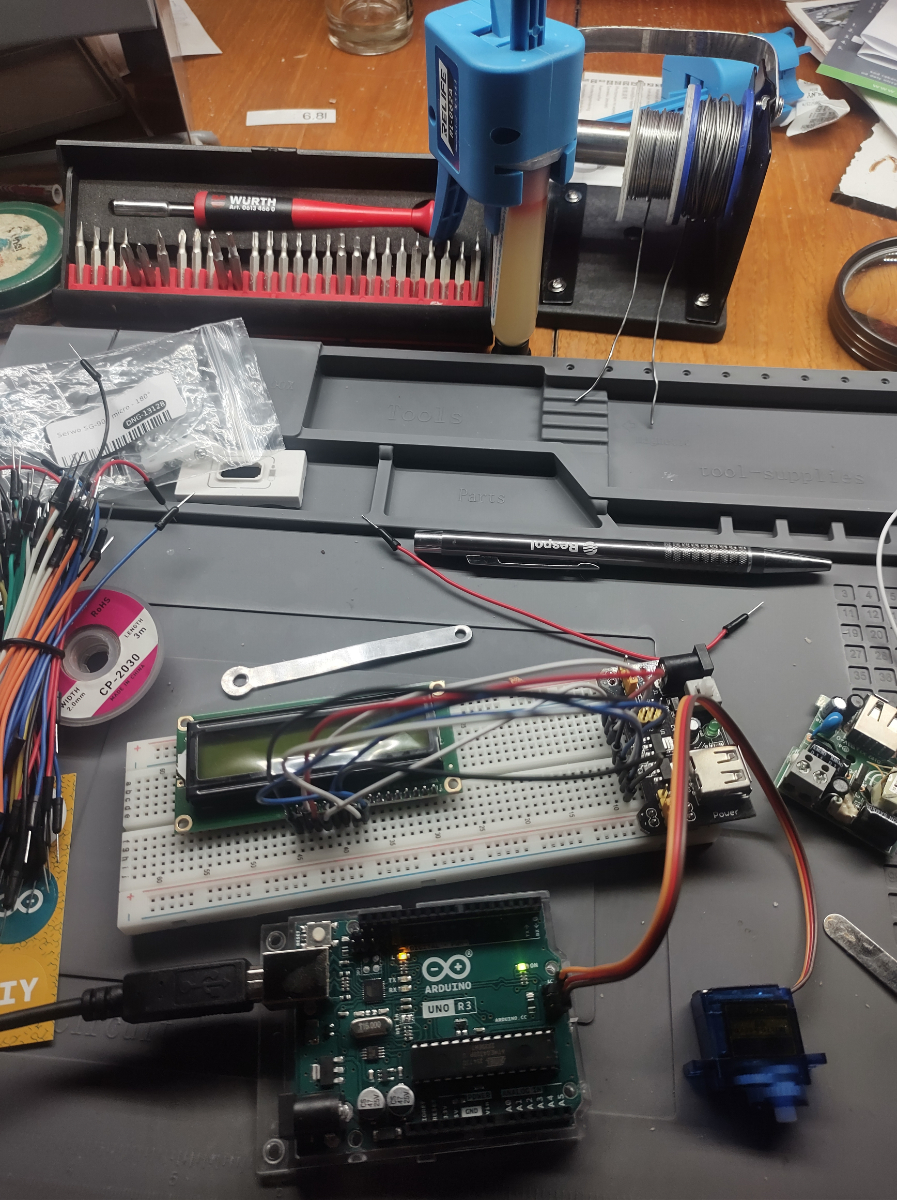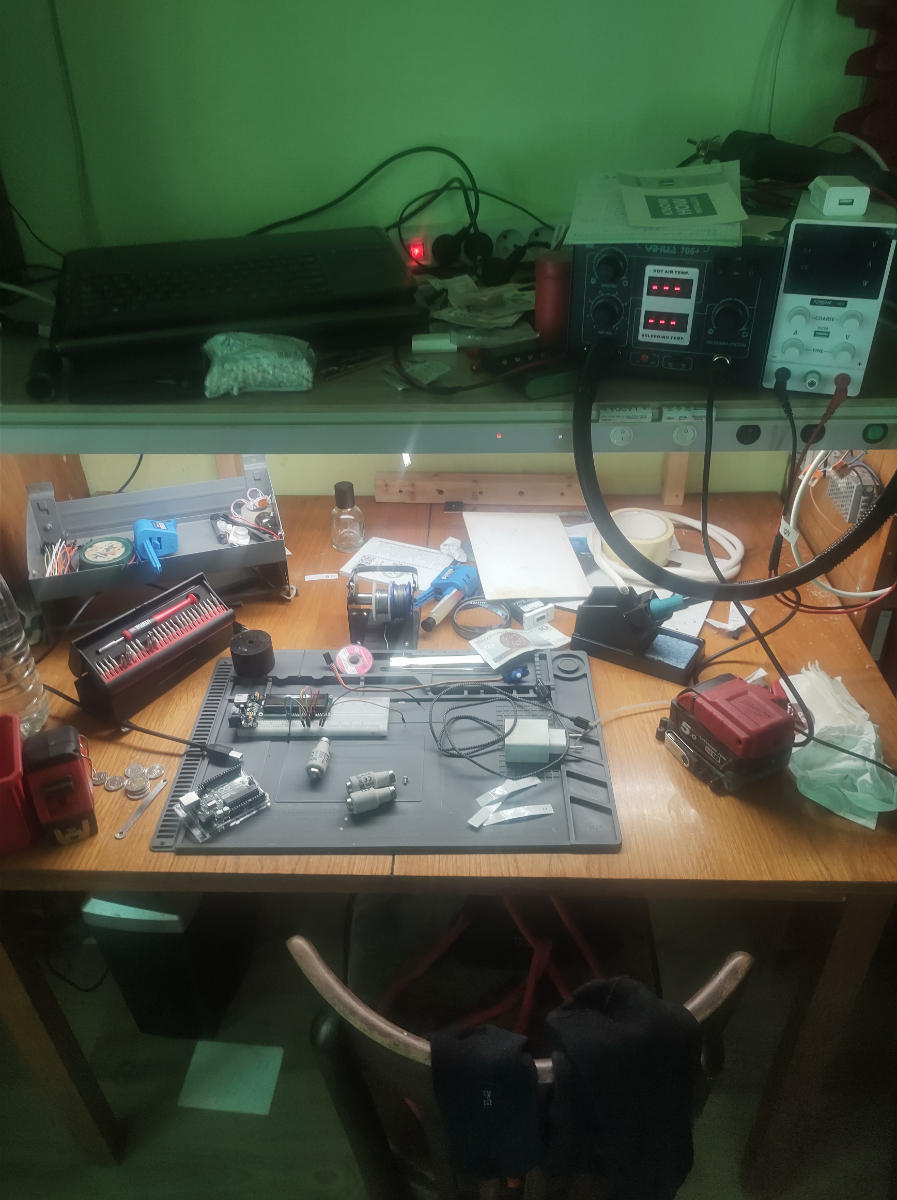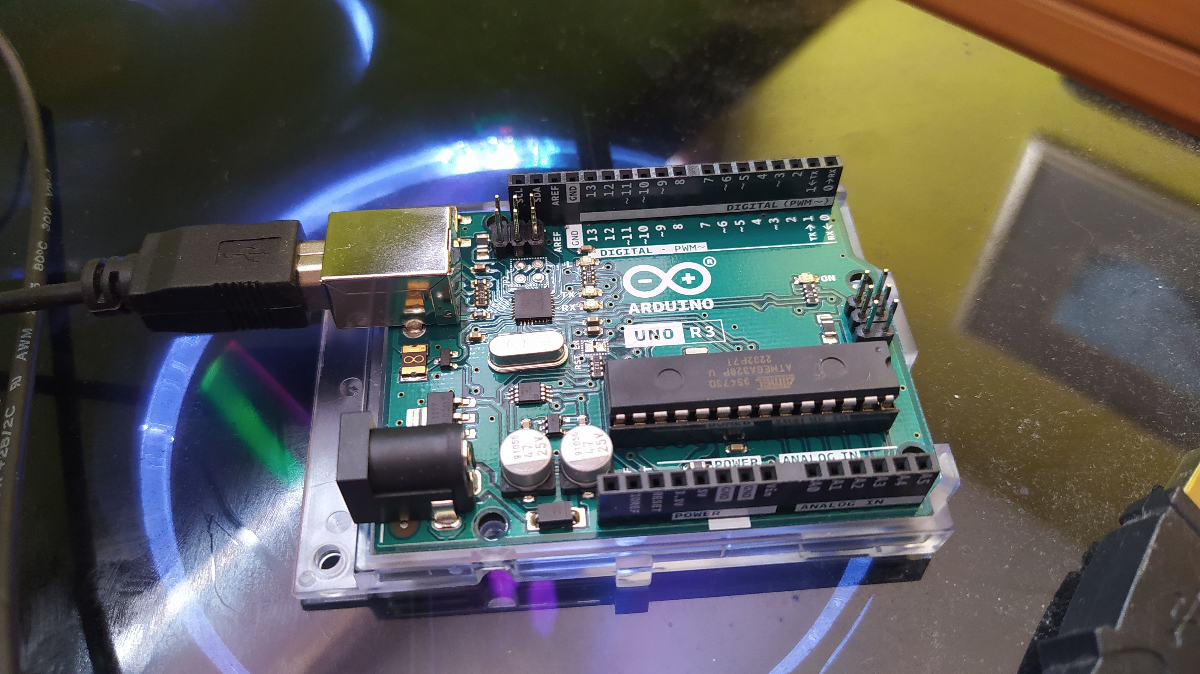Description
Arduino Uno is the main and, at the same time, the most popular edition of the entire series. The Board contains an ATmega328 microcontroller, equipped with 14 digital I/o of which 6 can be used as PWM outputs (e.g. for motor control), and 6 analog inputs. The system works with the signal ticking with the frequency of 16 MHz and has 32 KB Flash memory and 2 KB RAM SRAM.
The subject of the sale is the original product of Arduino Uno, Botland is the official distributor of this company.
Key features
Below are a few features that distinguish modules Arduino Uno compared to other programmable tiles.
| Name | Description |
|---|---|
|
Installed bootloader |
Thanks to installed bootloader, to programme the device, the appropriate USB cable and software from manufacturer's website is enough . |
|
Arduino Shield |
The distribution of connectors allows the installation of special plates, so-called Arduino Shield. |
|
Digital outputs |
14 digital inputs/outputs allows, in particular, control of LEDs, relays and reading the buttons' states. |
|
Efficiency of current |
The maximum power load for a single output is 40 mA. |
|
PWM Outputs |
6 PWM outputs allow e. g. motor control and brightness control of the LEDs. |
|
Analog inputs |
6 inputs of built-in analog-digital converter box with a resolution of 10-bit support, in particular, sensors with analog output. |
|
Serial Communication |
The device supports popular network interfaces, including UART, I2C and SPI. |
| Special functions | Some of the pins have special functions and their brief description is available in our guide. |
|
Built-in memory |
Atmega328 system with a clock signal with a frequency of 16 MHz, has 32K Flash memory, 1 KB EEPROM and 2 KB of RAM SRAM. |
|
Power DC connector |
To power the Arduino, you can use any power source with a voltage from 7 V to 12 V with DC connector 5.5 x 2.1 mm. |
|
Power USB port |
The tile can be powered from a computer via USB cable, bearing in mind that the maximum power load for the USB port is 500 mA. Arduino has a system that protects the socket from short-circuit and the flow of too large current. |
|
ICSP Connector |
The module has ICSP outputs for connecting an external AVR programmer. |
|
IOREF Pin |
The IOREF Pin provides direct access to the volatge with which I/O outputs work. |
|
Built-in led |
The connected led on pine 13 allows debugging of simple programs. |
|
Output 3.3 V |
Built-in voltage regulator provides power to external devices with the voltage of 3.3 V with current consumption of 50 mA. |
|
Microcontroller in THT |
Thanks to the use of THT case, in case of damaging the main microcontroller Atmega328P you can easily replace it. |
|
First run To help you get started with the module, we have prepared a tutorial that concerns the installation and first run of the Arduino environment. |
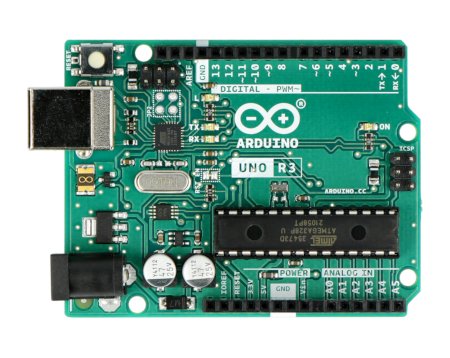
The distribution of elements on the Arduino Uno.
Specification
- Supply voltage from 7 V to 12 V
- Model: Arduino Uno
- Microcontroller: ATmega328
- Maximum clock frequency: 16 MHz
- SRAM: 2 KB
- Flash memory: 32 KB (5 KB is reserved for bootloader)
- EEPROM: 1 KB
- I/O Ports: 14
- PWM outputs: 6
- Number of analog inputs: 6 (channels of converter A/C with 10 bit resolution)
- Serial interfaces: UART, SPI, I2C
- External interruptions
- The connected led on pin 13
- USB A connector for programming
- DC connector 5.5 x 2.1 mm for power
- Transparent, self-adhesive stems in kit
Useful links |
